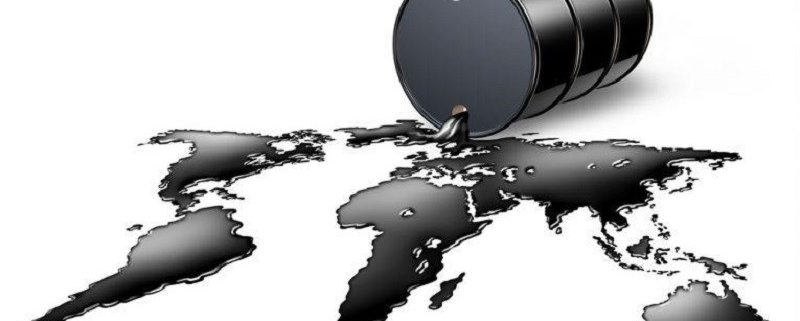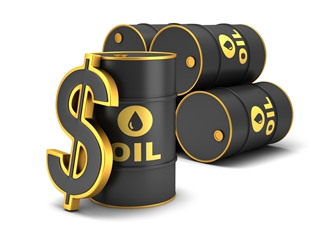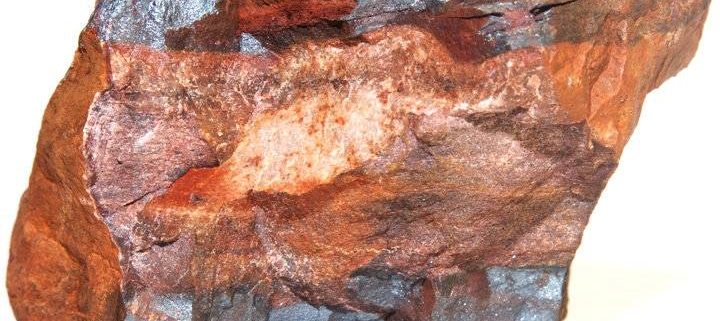Africa’s Potential in growing production: Gabon Oil Market
Gabon is Africa’s fourth largest oil producer. (in Sub-Saharan Africa.) With an output of around 220,000 barrels per day, dominated by international oil majors Total and Shell.
| Gabon Trade | Last | Previous | Highest | Lowest | Unit |
| Balance of Trade | 3711.95 | 3572.48 | 3964.22 | 439.20 | FCFA Million |
| Exports | 6168.03 | 5829.90 | 6168.03 | 1125.40 | FCFA Million |
| Imports | 2456.08 | 2257.42 | 2456.08 | 560.60 | FCFA Million |
| Current Account | 341.00 | 439.00 | 1516.50 | 236.30 | FCFA Million |
| Current Account to GDP | -8.10 | 6.70 | 22.88 | -31.07 | Percent |
| Gold Reserves | 0.40 | 0.40 | 0.40 | 0.40 | Tonnes |
| Crude Oil Production | 210.00 | 210.00 | 374.00 | 205.00 | BBL/D/1K |
Production
 Firstly, crude Oil Production in Gabon averaged 273.97 BBL/D/1K from 1994 until 2016. Reaching an all time high of 374 BBL/D/1K in August of 1995. And a record low of 205 BBL/D/1K in April of 2015. Secondly, crude Oil Production in Gabon remained unchanged. At 210 BBL/D/1K in March from 210 BBL/D/1K in February of 2016.
Firstly, crude Oil Production in Gabon averaged 273.97 BBL/D/1K from 1994 until 2016. Reaching an all time high of 374 BBL/D/1K in August of 1995. And a record low of 205 BBL/D/1K in April of 2015. Secondly, crude Oil Production in Gabon remained unchanged. At 210 BBL/D/1K in March from 210 BBL/D/1K in February of 2016.
Also, production in Gabon comes from a portfolio of over 20 non-operated onshore and offshore fields.
As a result of near term cash flow optimization and decisions by the field operators. Due to the low oil price, reduced activity will continue across Tullow’s non-operated West Africa portfolio. Rather, there is flexibility. To increase capital investment in the medium term. To offset production decline in these mature assets, as market conditions improve.
Oil Reserves
In addition, both on land and offshore, Gabon possesses ample oil resources.  In terms of authenticate recoverable reserves. While according to the Oil & Gas Journal (OGJ), Gabon had 2 billion barrels of proven oil reserves. Especially relevant, the end of 2012, Gabon was the fifth-largest oil producer in Sub-Saharan Africa. Due to its position behind Nigeria, Angola, Sudan & South Sudan, and Uganda. Most of Gabon’s oil fields are located in the Port-Gentil area and are both onshore and offshore. Therefore, Gabon’s oil production has been reduced by toward one-third from its peak of 370,000 barrels per day (bbl/d) in 1997. To 244,000 bbl/d in 2012.
In terms of authenticate recoverable reserves. While according to the Oil & Gas Journal (OGJ), Gabon had 2 billion barrels of proven oil reserves. Especially relevant, the end of 2012, Gabon was the fifth-largest oil producer in Sub-Saharan Africa. Due to its position behind Nigeria, Angola, Sudan & South Sudan, and Uganda. Most of Gabon’s oil fields are located in the Port-Gentil area and are both onshore and offshore. Therefore, Gabon’s oil production has been reduced by toward one-third from its peak of 370,000 barrels per day (bbl/d) in 1997. To 244,000 bbl/d in 2012.
Oil Consumption In Country
Averaging around 14,000 bbl/d , over the last decade, oil consumption in country has remained permanently low. Yet, consequently, more than 90 percent of output is exported (around 250,000 bbl/d on average) over the last decade.
Throughout the history, Gabon’s oil production has been concentrated in one large oil field and supported by several smaller fields.  As a result, the largest field matured and production declined. In process, the other fields emerged and replaced dwindling production. Furthermore, dominant fields have included Gamba/Ivinga/Totou (1967-1973), Grondin Mandaros Area (1974-1988), and Rabi (1989-2010). Most of all the Rabi oil field, as Gabon’s major success, significantly boosted the country’s total output in the 1990s. It reached 217,000 bbl/d at its peak in 1997. Although Rabi is still one of Gabon’s largest producing fields, it has matured and production has gradually declined to about 23,000 bbl/d in 2010.
As a result, the largest field matured and production declined. In process, the other fields emerged and replaced dwindling production. Furthermore, dominant fields have included Gamba/Ivinga/Totou (1967-1973), Grondin Mandaros Area (1974-1988), and Rabi (1989-2010). Most of all the Rabi oil field, as Gabon’s major success, significantly boosted the country’s total output in the 1990s. It reached 217,000 bbl/d at its peak in 1997. Although Rabi is still one of Gabon’s largest producing fields, it has matured and production has gradually declined to about 23,000 bbl/d in 2010.
Same, since Rabi’s climb-down, a new large field has not yet cropped up, since recent exploration has yield only modest finds.
Therefore, country ranks third largest in sub-Saharan Africa, after Nigeria and Angola.
OPEC Membership
Hence, Gabon was a member of OPEC from 1975 to 1995.

Seems like it withdrew on the grounds that it was unfair for it to be charged the same membership fee as the larger producers but not to have equivalent voting rights.
These recent years over 90% of Gabon’s oil output has been exported, mainly to the USA.
In conclusion, as years went by, Gabon became OPEC’s member once again in 2016. In the april of 2016, Gabon officially sent the rejoining quest to OPEC. As having a substantial net export of crude, which OPEC rules as a state country needs to have, it became a part of OPEC’s ‘family’ for the 2nd time.




 Oil steadied on Wednesday. After OPEC said it was committed to eroding a global supply. Overhang that has dogged markets since 2014, but with U.S. output and inventories rising, analysts said prices looked vulnerable. (Yahoo finance)
Oil steadied on Wednesday. After OPEC said it was committed to eroding a global supply. Overhang that has dogged markets since 2014, but with U.S. output and inventories rising, analysts said prices looked vulnerable. (Yahoo finance)
 Most of U.S. sanctions against Iran were lifted in late 2015 under a nuclear deal. Letting Tehran to more than double its crude exports over 2016. This move just added a bit to the global oversupply.
Most of U.S. sanctions against Iran were lifted in late 2015 under a nuclear deal. Letting Tehran to more than double its crude exports over 2016. This move just added a bit to the global oversupply.

 left a few open questions behind. Trump made a decision about reviewing the U.S. Visa program. Changing the position of high-skilled foreign workers in the country. Putting technology firms and the outsourcing companies that serve them, on notice that possible changes may happen.
left a few open questions behind. Trump made a decision about reviewing the U.S. Visa program. Changing the position of high-skilled foreign workers in the country. Putting technology firms and the outsourcing companies that serve them, on notice that possible changes may happen. Even if it exists in the U.S. law for a long period. Negations granted to foreign companies that undercut their U.S. counterparts on pricing.
Even if it exists in the U.S. law for a long period. Negations granted to foreign companies that undercut their U.S. counterparts on pricing.




 Still, bigger supplies from producers in the fourth quarter of 2016 at this moment seem “a dark cloud hanging over the market.” And also a failure to extend the output agreement which would send prices “precipitously lower.”
Still, bigger supplies from producers in the fourth quarter of 2016 at this moment seem “a dark cloud hanging over the market.” And also a failure to extend the output agreement which would send prices “precipitously lower.” Brent on the ICE Futures Europe exchange was down 35 cents at $55.01 a barrel. (Bloomberg)
Brent on the ICE Futures Europe exchange was down 35 cents at $55.01 a barrel. (Bloomberg)

 Base metals prices started a holiday-shortened week mostly on the defensive. With LME premarket trading on Tuesday April 18 seeing lower levels. – Potentially supportive macroeconomic developments were shrugged off.
Base metals prices started a holiday-shortened week mostly on the defensive. With LME premarket trading on Tuesday April 18 seeing lower levels. – Potentially supportive macroeconomic developments were shrugged off. e seasonally strong second quarter. The lack of upside momentum in most of the metals since mid-February has increased the chance of stale long liquidation,” William Adams of Metal Bulletin said.
e seasonally strong second quarter. The lack of upside momentum in most of the metals since mid-February has increased the chance of stale long liquidation,” William Adams of Metal Bulletin said. y trading at $1,928 per tonne, up $18 from the Thursday close. The local government in Xinjiang, western China, halted three new aluminium projects with combined capacity of 2 million tons per year for violating rules aimed at curbing output.
y trading at $1,928 per tonne, up $18 from the Thursday close. The local government in Xinjiang, western China, halted three new aluminium projects with combined capacity of 2 million tons per year for violating rules aimed at curbing output. a $29 decline, and looks vulnerable to a test of last week’s $5,615 low. While three-month zinc price was at $2,593 per tonne, a $31 loss, with a test of $2,558 – last week’s low-point – possible. Also, three-month lead price skidded as low as $2,200 per tonne, a $39 loss, while nickel fell to $9,560, down $190. Most noteworthy, three-month tin price stood at $19,795 per tonne, however, a $190 advance.
a $29 decline, and looks vulnerable to a test of last week’s $5,615 low. While three-month zinc price was at $2,593 per tonne, a $31 loss, with a test of $2,558 – last week’s low-point – possible. Also, three-month lead price skidded as low as $2,200 per tonne, a $39 loss, while nickel fell to $9,560, down $190. Most noteworthy, three-month tin price stood at $19,795 per tonne, however, a $190 advance.
 Brazil’s ore export volumes fell 4.7% year-on-year in March. Exports totalled 95,829 tonnes. Down from 100,528 tonnes in March 2016. The main destination for the Brazilian copper ore was India. With an intake of 31,583 tonnes last month. About 70% of the shipments came from the northern state of Pará, where Vale has its copper operations.
Brazil’s ore export volumes fell 4.7% year-on-year in March. Exports totalled 95,829 tonnes. Down from 100,528 tonnes in March 2016. The main destination for the Brazilian copper ore was India. With an intake of 31,583 tonnes last month. About 70% of the shipments came from the northern state of Pará, where Vale has its copper operations. razilian cathode exports posted a significant year-on-year drop in March. As Paranapanema, the country’s only producer, shifted its focus back to the domestic market. Cathode exports reached 1,766 tonnes last month, down from 16,138 tonnes in March 2016.
razilian cathode exports posted a significant year-on-year drop in March. As Paranapanema, the country’s only producer, shifted its focus back to the domestic market. Cathode exports reached 1,766 tonnes last month, down from 16,138 tonnes in March 2016. Brazil exported 2,022 tonnes of copper wire in March, down from 3,515 tonnes a year earlier, according to MDIC.
Brazil exported 2,022 tonnes of copper wire in March, down from 3,515 tonnes a year earlier, according to MDIC. Throughout the month, c. futures saw monthly average daily volumes (ADV) hit 79,265. Bringing the year-to-date ADV to 94,653 – up 10.8% compared with the same period a year ago.
Throughout the month, c. futures saw monthly average daily volumes (ADV) hit 79,265. Bringing the year-to-date ADV to 94,653 – up 10.8% compared with the same period a year ago.





 Growth of 6.9 percent was the fastest in six quarters! Forecasts beating March investment, retail sales and exports all suggesting the economy may carry solid momentum into spring.
Growth of 6.9 percent was the fastest in six quarters! Forecasts beating March investment, retail sales and exports all suggesting the economy may carry solid momentum into spring. In order to sustain growth in the long term. The question we need to ask is whether this investment-led model is sustainable? As the authorities have trouble taming credit. We need to watch closely whether China’s top leadership will send a stronger signal to tighten monetary policy shortly.” (ANZ info)
In order to sustain growth in the long term. The question we need to ask is whether this investment-led model is sustainable? As the authorities have trouble taming credit. We need to watch closely whether China’s top leadership will send a stronger signal to tighten monetary policy shortly.” (ANZ info)



 added 11 oil rigs in the week to April 13, bringing the total count up to 683.” (Baker Hughes, Energy services firm said.) That is the highest in about two years. <RIG/U>
added 11 oil rigs in the week to April 13, bringing the total count up to 683.” (Baker Hughes, Energy services firm said.) That is the highest in about two years. <RIG/U> United States is constantly irritating OPEC with its increasing outputs. In the meantime, they are also irritating other major oil producers who made a deal to cut outputs. Curbing output sustains a rally in prices in a market that has been oversupplied since 2014.
United States is constantly irritating OPEC with its increasing outputs. In the meantime, they are also irritating other major oil producers who made a deal to cut outputs. Curbing output sustains a rally in prices in a market that has been oversupplied since 2014.

 ey were claiming the damage was worth 10 billion dollars !
ey were claiming the damage was worth 10 billion dollars !
 in the world.
in the world. Why would a billionaire want to loose his precious time on sabotaging someone else’s businesses? It is only possible if he has some “profits” to gain out of that.
Why would a billionaire want to loose his precious time on sabotaging someone else’s businesses? It is only possible if he has some “profits” to gain out of that.